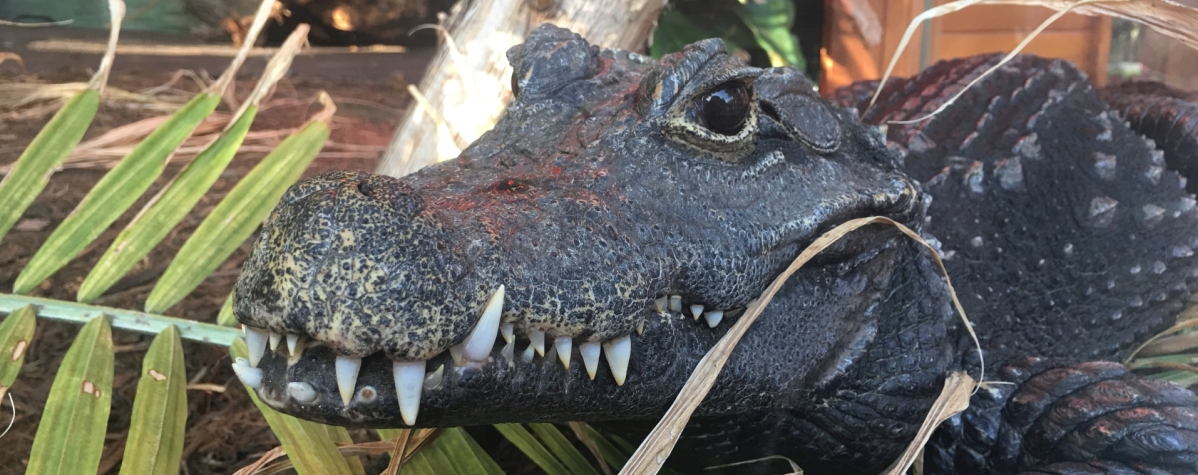Two-toed sloth
Scientific Classification
| Species | Choloepus didactylus |
| Kingdom | Animalia |
| Phylum | Chordata |
| Class | Mammalia |
| Order | Pilosa |
| Family | Megalonychidae |
| IUCN Status | Least Concern |
Appearance and lifespan
Linne's Two-Toed Sloths are named for their two long, hook-clawed toes on each of their front feet. They have long, coarse, brown fur and can grow to be up to about 91 cm (35.8 in) long. Because sloths hang upside down, their fur grows from their belly towards the back, so rainwater will run off. Below the top layer, a second denser layer of fur provides protection from biting insects. Linne’s two-toed sloths live for about 20 years, mostly in solitary.
They move extremely slowly and spend a large portion of their time hanging upside down. They only descend from the tree canopy to move to a different tree or to defecate. Linne's Two-Toed Sloths are good swimmers but do not move well on the ground.
Behavior and reproduction
After a gestation period of 6 months, Linne’s Two-Toed Sloths give birth to a single young. At birth, they weigh approximately 340 g (12 oz) and they are around 25 cm (10 in) in length. They reach sexual maturity at 3 to 5 years of age.
Sloths spend most of the day asleep, curled up in a tree notch or hanging from a branch with all four legs close together and their heads tucked between their front legs. At feeding time, sloths move slowly and carefully, hand over hand through the treetops, searching for leaves, buds, fruits, and twigs. They even mate and give birth while suspended from their long, curved claws.
Similar to cold blooded creatures like snakes and frogs, a sloth's body temperature is also highest on warm, sunny days, and lowest at night and on rainy days. Sometimes a sloth sunbathes in the morning to warm up. Then, during the hottest part of the day, it hides in the shade so it won't overheat. During a 24-hour period, a sloth's body temperature may vary as much as 10°F.
Ecology & Conservation
Linne's Two-Toed Sloths are found in tropical rainforests. They live in trees and have a range of approximately 10 acres. Linne’s Two-Toed Sloths eat leaves, fruits, and flowers from a variety of trees and vines. A sloth digests its food just as it does everything else—very slowly. People usually digest their food in about a day, but in sloths, the process may take a month. A sloth stores its feces and urine for about a week. Then it slowly descends to the ground, and deposits up to 0.9kg (2 lbs) of dung. That's a lot of waste for an animal that weigh between 4 and 8.5 kgs (8.75 to 19 lbs).
Food at the Zoo
At the zoo, we feed the sloth apples, pears, banana, broccoli, carrots celery, leaf eater biscuit, romaine lettuce, spinach, yam, melons, and figs. We also provide nuts consisting of almonds, flax seeds, peanuts, pumpkin seeds and walnuts and fresh greens like parsley, herbs cabbage and dandelions.
Threats
Although Linne’s two toed sloth populations are stable, they are threatened by habitat destruction and opportunistic hunting for their pelts and their claws for jewelry.
Did you know?
- Linee’s two-toed sloths sleep between 15-20 hours a day!
- Two-toed sloths have 3 toes on their hind feet.
- Sloths possess large canine teeth.
- The sloth here at Riverview Park and Zoo are part of a Species Survival Plan, which helps to ensure healthy numbers of certain species of animals in captivity in order to prevent extinction!
Adopt the sloth
Become a part of the the Riverview Park and Zoo family through our Adopt an Animal Program!


